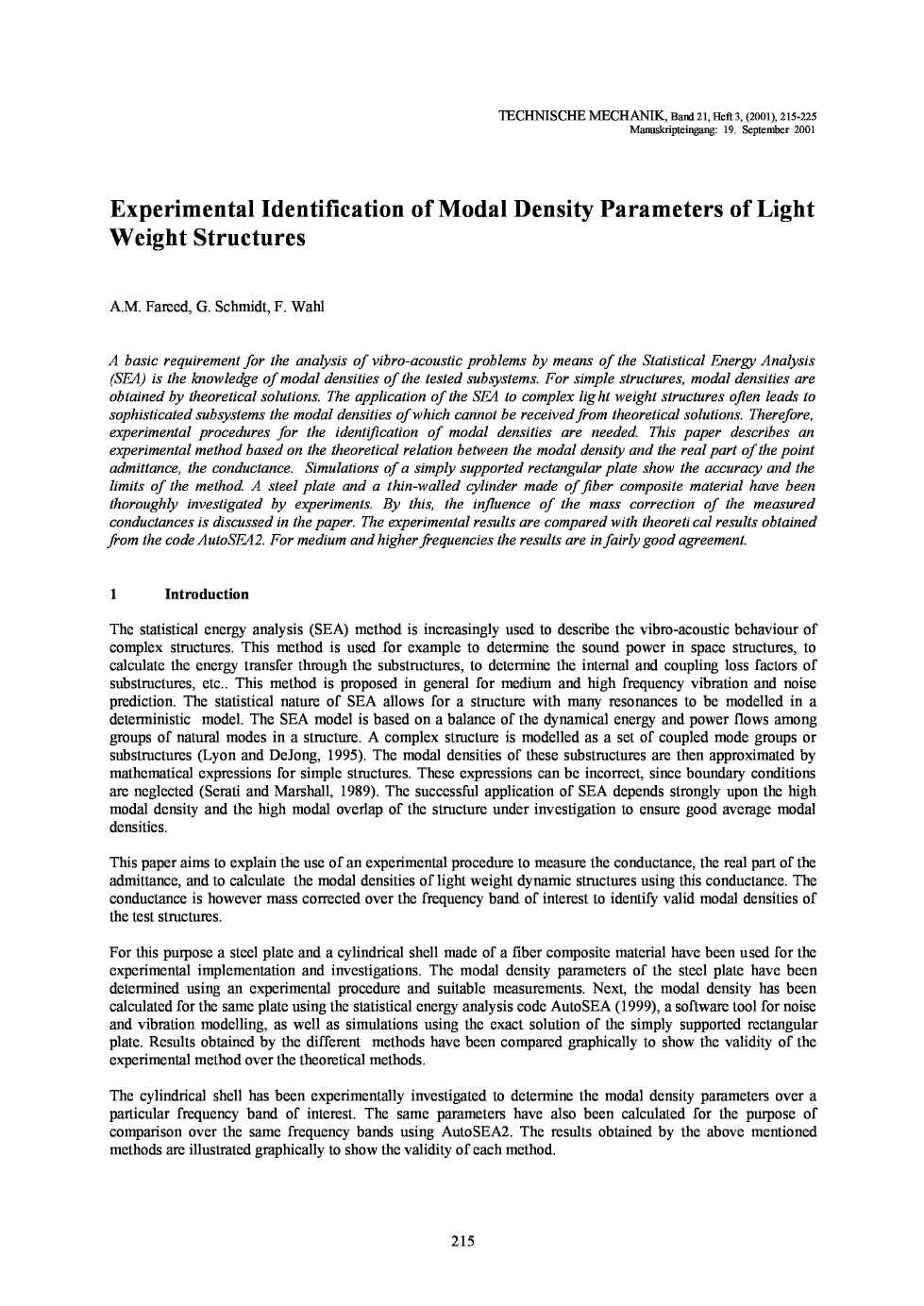Experimental Identification of Modal Density Parameters of Light Weight Structures
Abstract
A basic requirement for the analysis of vibro-acoustic problems by means of the Statistical Energy Analysis (SEA) is the knowledge of modal densities of the tested subsystems. For simple structures, modal densities are obtained by theoretical solutions. The application of the SEA to complex light weight structures often leads to sophisticated subsystems the modal densities of which cannot be received from theoretical solutions. Therefore, experimental procedures for the identification of modal densities are needed. This paper describes an experimental method based on the theoretical relation between the modal density and the real part of the point admittance, the conductance. Simulations of a simply supported rectangular plate show the accuracy and the limits of the method A steel plate and a thin-walled cylinder made offiber composite material have been thoroughly investigated by experiments. By this, the influence of the mass correction of the measured conductances is discussed in the paper. The experimental results are compared with theoretical results obtained from the code AutoSEA2. For medium and higher frequencies the results are in fairly good agreement.





